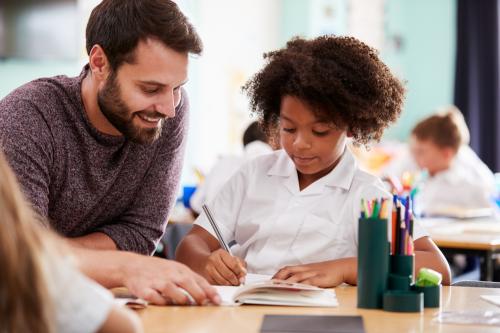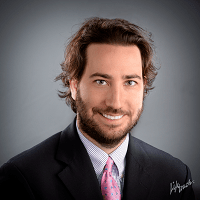This is part of a series of posts in the “Community Schools Leader Insights” series in which Brookings is sharing the experiences of people in the thick of community schools and who are making strides toward student success through the unique strengths of the local community.
Learning loss, mental health crises, escalating economic inequity … school district leaders recognize that these challenges students and families are facing, particularly after the pandemic, require strategies and enhanced coordination to meet the growing needs. These challenges also require shared responsibility with the community if we are to make real progress.
Jeff Snell, superintendent of Vancouver Public Schools (Washington), shared his ideas: “The community school model is a great example of what can happen when schools and communities come together and focus on what it takes for students to learn and thrive. Students learn at the highest levels when their fundamental needs are met, including when they feel supported, when they feel loved and when they feel that they belong—at school and in their communities. When these conditions are met, students are more likely to feel focused and ready to learn. To make that happen might require additional resources and definitely a partnership between schools and the larger community.”
An effective school leader shouldn’t choose between a focus on meeting the needs of the whole child or a focus on instruction—the two are inextricably and irrevocably linked.
A community school is a locally driven school transformation strategy that leverages and coordinates the resources of the whole community to build a school by and for students, families, educators, and community partners. While coordinating supports and opportunities is an important aspect of community schools, it is the enhanced teaching and learning that makes the strategy a success.
The community school environment
The motivation for community schools to engage family and community in school design and practice, integrate student supports to meet their basic needs, and employ collaborative leadership models is to positively impact the practices of teaching and learning experiences.
“In a community school, the conditions of learning are in place so that teaching and learning happen in an environment that is collaborative, culturally responsive, strength based and built on relationships,” Chien Wu-Fernandez, interim superintendent of Hayward Unified School District (California) shares. Working together, the school community participates in an ongoing cycle of reflection, analysis, revision, and improvement to ensure students and families are valued, engaged, healthy, and empowered members of their school and community.
Superintendent Leslie Torres-Rodriguez leads Hartford Public Schools in Connecticut, which through the Hartford Partnership for Student Success, has invested in community schools across the district. She shares that, “Teaching and learning sound, look, and feel different because in community schools, the backdrop (context) of all efforts requires reflection and action based on the local needs, assets, and priorities of the local community. The student, within the context of their local community, is at the center. Such a stance calls for ongoing intentionality to rethink, rebuild, and sustain relationships based on mutual trust and respect for all members of the community.”
Teaching, learning, and student success
Community school practices help make instruction, curriculum, and engagement more culturally responsive. The focus on students’ context, for example, leads to deeper consideration of which texts, questions, and themes would draw out the richest student discussions–enhancing relevance and rigor simultaneously. Community-based learning strategies like internships and service projects provide rich, culturally sustaining educational opportunities for young people at community schools.
Vancouver Public Schools has been a leader in the community school movement in Washington state. Superintendent Snell added, “We firmly believe each student deserves whatever support we can offer to increase the equity of our public education systems and help them realize that potential. This is the reason we implemented and continue to invest heavily in the community school model.”
Education leaders and policymakers rightly focus on teaching, learning, and student success. Research shows that creating safe and healthy school conditions, effective practices, and strong relationships are the hallmarks of high-performing schools. An effective school leader shouldn’t choose between a focus on meeting the needs of the whole child or a focus on instruction—the two are inextricably and irrevocably linked. Creating the conditions for learning is an important part of a “teaching and learning” strategy. Leveraging the incredible assets in our communities–from families to organizations–is the best way to positively impact student achievement. If leaders have a clear focus on transforming teaching and learning in their district—and on the allocation of sufficient resources to meet the requited needs of students to realize this vision—then investing in community schools is the answer.






Commentary
The dynamism of teaching and learning in community schools
Community Schools Leader Insights
October 24, 2022